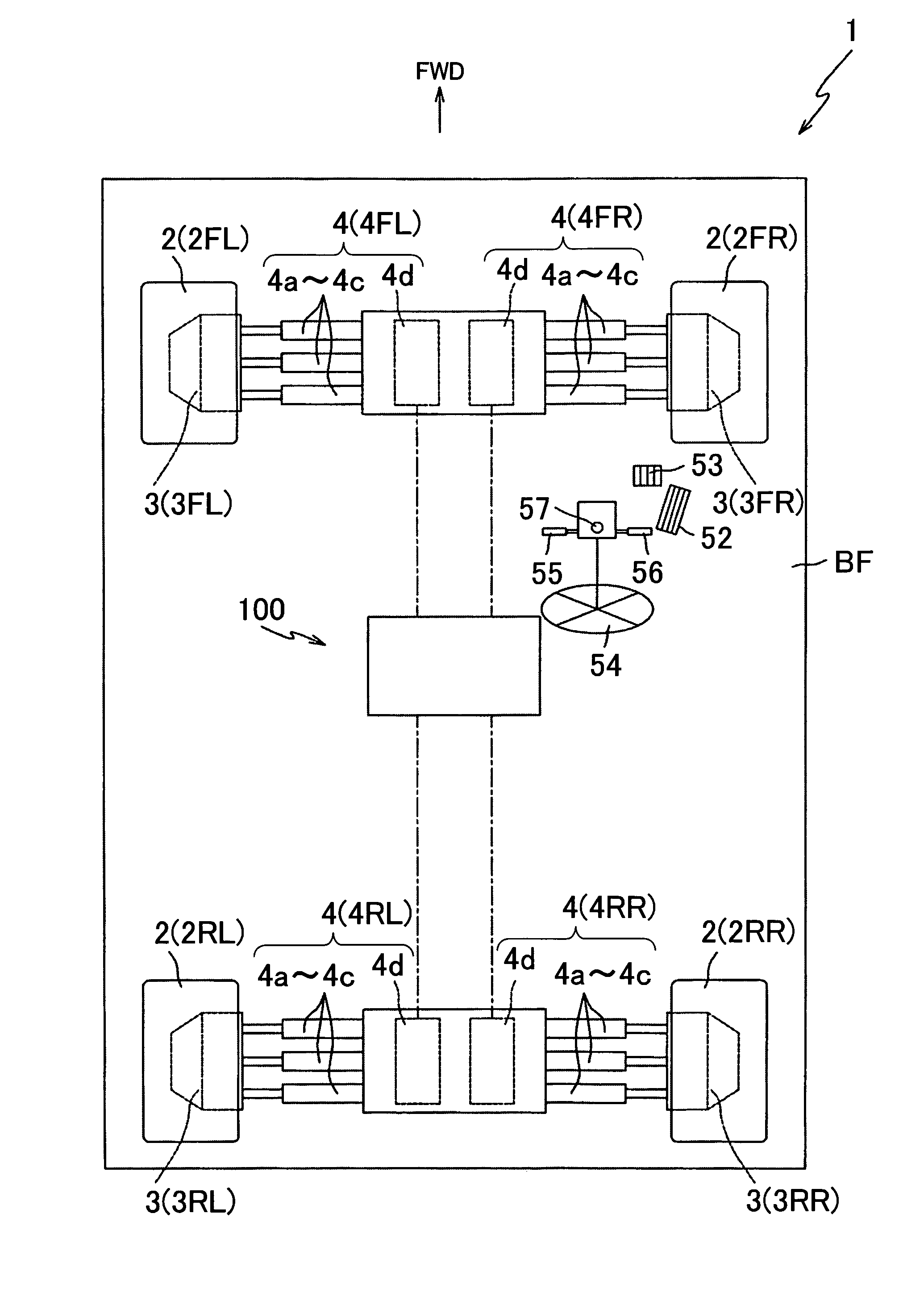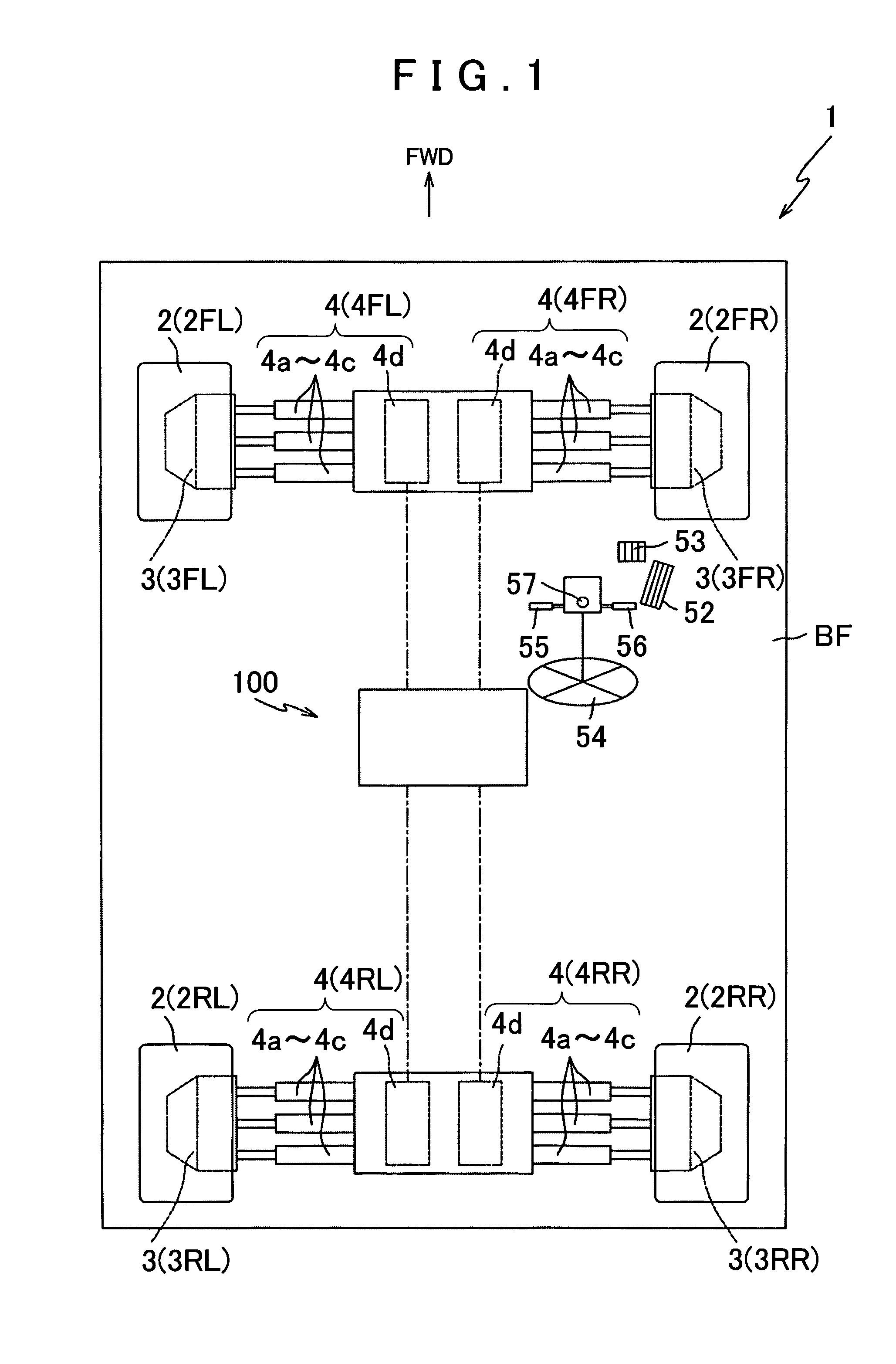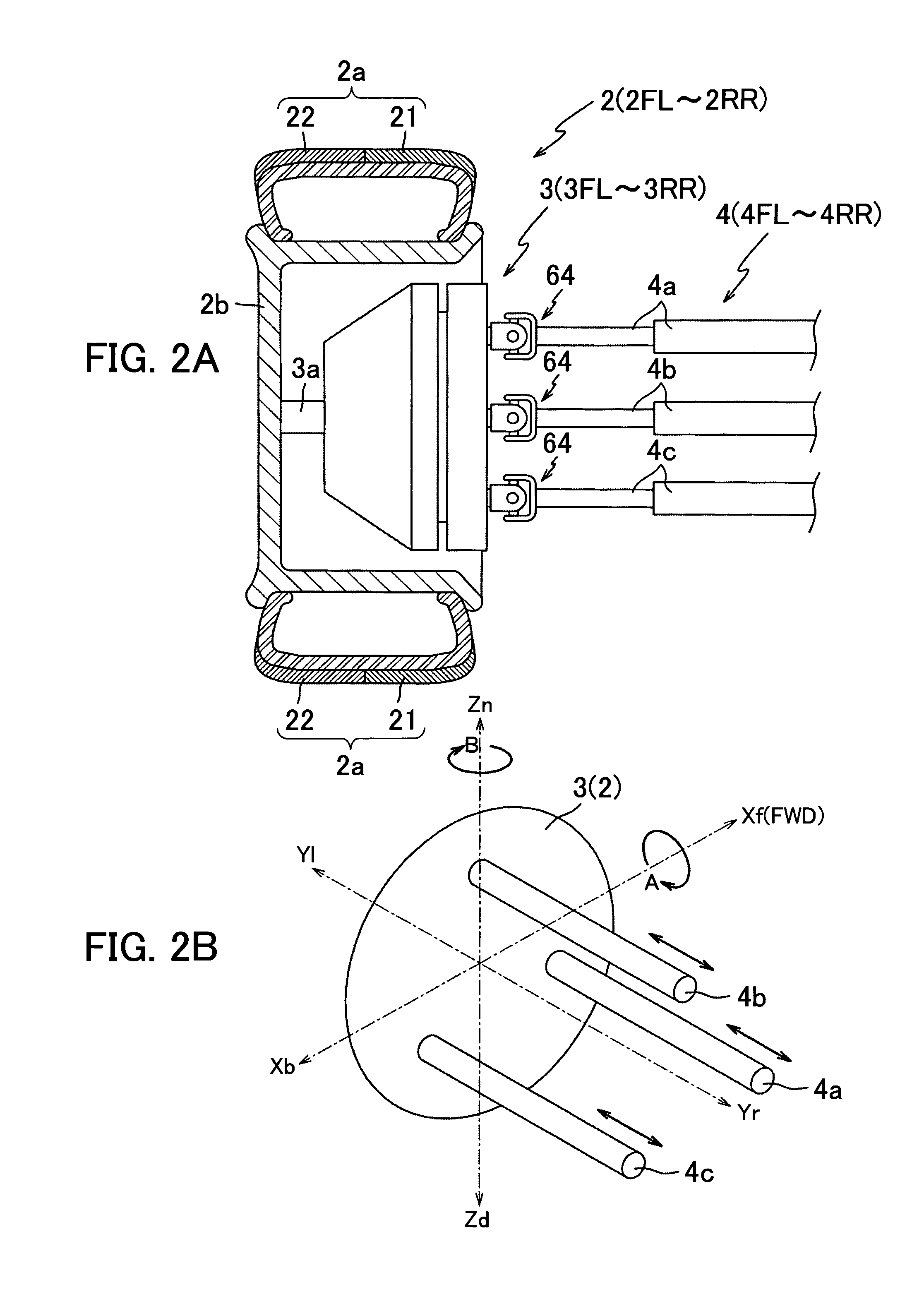Vehicle control device
a technology of vehicle control and control device, which is applied in the direction of cycle equipment, instruments, transportation and packaging, etc., can solve the problems of uneconomical tire wear, inability to obtain sufficient turning performance, and increase the temperature of the tread end portion, so as to improve acceleration performance and brake performance, and high grip performance
- Summary
- Abstract
- Description
- Claims
- Application Information
AI Technical Summary
Benefits of technology
Problems solved by technology
Method used
Image
Examples
first embodiment
[0050]Hereinafter, preferred embodiments of the present invention will be described with reference to the accompanying drawings. FIG. 1 is a schematic view showing a vehicle 1 in which a vehicle control device 100 according to the present invention is mounted. Note that an arrow FWD in FIG. 1 shows a forward direction of the vehicle 1.
[0051]First, the schematic configuration of the vehicle 1 will be described. As shown in FIG. 1, the vehicle 1 mainly includes a body frame BF, a plurality of (four in this embodiment) wheels 2 supported by the body frame BF, a wheel drive device 3 which rotatably drives each wheel 2 independently, and a camber angle adjustment device 4 which performs steering drive, adjustment of a camber angle, and the like of each wheel 2. The vehicle 1 is configured to achieve an improvement in driving performance and fuel saving by controlling the camber angle of the wheel 2 by the vehicle control device 100 and distinctly using two types of treads provided on the...
second embodiment
[0133]As shown in FIGS. 8 and 9, the wheel 202 of the second embodiment includes the first tread 221 arranged on the inside of the vehicle 201 (right side in FIG. 8) and the second tread 22 having a different characteristic from the first tread 221 and arranged on the outside of the vehicle 201 (left side in FIG. 8).
[0134]Note that the first tread 221 is configured to have a characteristic of a higher grip force (higher grip performance) compared to the second tread 22, and the second tread 22 is configured to have a characteristic of a smaller rolling resistance (lower rolling resistance) compared to the first tread 221.
[0135]As shown in FIGS. 8 and 9, although the wheel 202 is configured such that the width dimensions (dimensions in the horizontal direction in FIG. 8) of the two treads 221 and 22 are the same, the second tread 22 is configured to have an outer diameter approximately constant in the width direction (horizontal direction in FIG. 8) while the first tread 221 is confi...
third embodiment
[0151]As shown in FIG. 12, the wheel 302 of the third embodiment includes the third tread 323, and the first tread 221 is arranged on the inside of the vehicle 301 (right side in FIG. 12), the third tread 323 is arranged on the outside of the vehicle 301 (left side in FIG. 12), and the second tread 22 is arranged between the first tread 221 and the third tread 323.
[0152]The third tread 323 is configured to have a characteristic of a higher grip force at least compared to the second tread 22, and the third tread 323 is configured such that the diameter gradually decreases from the second tread 22 side (right side in FIG. 12) toward the outside of the vehicle 301 (left side in FIG. 12), as shown in FIG. 12.
[0153]Accordingly, only the second tread 22 can be caused to contact the ground in a state where the first tread 221 and the third tread 323 are apart from the road surface G without providing a large camber angle to the wheel 302 (for example, even if the camber angle is set to 0°)...
PUM
 Login to View More
Login to View More Abstract
Description
Claims
Application Information
 Login to View More
Login to View More - R&D
- Intellectual Property
- Life Sciences
- Materials
- Tech Scout
- Unparalleled Data Quality
- Higher Quality Content
- 60% Fewer Hallucinations
Browse by: Latest US Patents, China's latest patents, Technical Efficacy Thesaurus, Application Domain, Technology Topic, Popular Technical Reports.
© 2025 PatSnap. All rights reserved.Legal|Privacy policy|Modern Slavery Act Transparency Statement|Sitemap|About US| Contact US: help@patsnap.com



